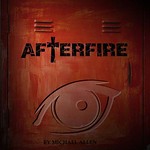Ever since the turn of the decade, the topic of exorcism has been on the rise in the movies. While The Unborn (2009) was widely lamented, other mainstream products, like [Rec] 2 (2009), The Last Exorcism (2010), and The Rite (2011) proved to be a bit more exciting. The independent scene went wild with even more, but they do not quite explain why audiences are fascinated.
History provides some answers. In England, the exorcism ritual was commonly conducted in front of crowds. This morbid curiousity back then was normal part of early European life. It was to affirm faith at the time. But for the two denominations, Catholicism and Protestantism, the question of which faith can do the better job became more of an issue of propaganda than about the possessed. Sometimes that issue gets addressed in these exorcism films, and that helps make for a better story.
In real life history, these higher profile cases, like those that happened in Loudun which involved Sister Jeanne Agnes and her convent—said to have been possessed because of the crimes allegedly committed by Father Urbain Gradier—were public spectacles. Another one was the case of Nicole Obry, where her exorcism was conducted in front of huge theatre-sized crowds in Laon, France. Part of the appeal may well be natural curiousity during a time when devotion needed reinforcing.
But quite often the possessed individuals perform a type of social drama. They can reveal certain truths for an audience to respond to. In Believe Not Every Spirit: Possession, Mysticism & Discernment in Early Modern Catholicism, author Moshe Suhovsky argues: “they air their grievances and frustrations and call attention to suffering, all the while pretending to remain (or presenting themselves as being) passive messengers of the agencies that talk through them.”
But by the time of the Renaissance, reason overcame blind faith. The stage within a Church was replaced with a theatrical one, where stories were played out for even larger crowds. Even Shakespeare was no stranger to using exorcism as a device to advance plots; just look at King Lear. Even in Twelfth Night, the concept was used to entertain and thus engrain interest in future generations to come.
Moviegoers should be reminded of what the media during the 40’s was used for: they were all vehicles to push political agendas en masse. Since it was a time of war, nearly everyone in the world was uncertain of their future. Theatre was sometimes used to address many kinds of debates. Just look at the late 60’s, where many movements started. By the time the 70’s arrived, which became a time of uncertainty, The Exorcist (1973) hit the public imagination hard. With a film that shocked many theatregoers, some flocked back to Church and others re-evaluated life in the context of the question: does the Devil exist amongst us?
While the sequels of William Peter Blatty’s product did not provide answers, neither did any of the copycat films. From the 80’s to the turn of the century, the number of exorcism movies that appeared on screen was spotty. Some became lighthearted enough because certainty was coming back into society. Repossessed (1990) twisted the formula by injecting humour.
But later films, when the 1973 classic was deemed franchisable, would start to address individual issues than social mores. That’s especially true with the Exorcist sequels. They dealt with Father Philip Lamont in The Exorcist II, or had a narrative that began with, “I have dreams….”
Anthropologist I.M. Lewis argues that spirit possession is a kind of outlet to grieve. "[It was] a socially sanctioned opportunity for the powerless to give voice to their frustrations and desires,” in his book Ecstatic Religion: A Study of Shamanism & Spirit Possession. While he is commenting on real life cases, the films people go see are also their outlets to react and respond to those oppressed voices. Entertainment or not, films can make social commentary. And quite often, the language from the possessed speaks of society’s ills, and every author has a voice that’s channeled through the grunts of a demon.
To respond to those angry thoughts may well jolt some to either get closer to God, correct their own fears, or simply find solace in the fact that there is hope. When the movie does not deliver, then the product has failed. The exceptional movies in this genre deliver a message, and the draw for many theatre goers to flock to these films can very well be to find that which gives viewers the message they want to hear.
With The Cloth announced to release in 2012, the challenge will be even more diabolic. Is it being made to prove that the Devil does indeed walk amongst humanity or is it just to affirm that the days of the apocalypse (Revelations) in the Biblical sense is near? The Mayan Calendar that suggests the end of the world has competition.
An intro' article on The Cloth is here:
The Cloth on 28DLA
Sources Cited:
Lewis, I.M., Ecstatic Religion: A Study of Shamanism & Spirit Possession, (London: Routledge, 1989).
Suhovsky, Moshe, In Believe Not Every Spirit: Possession, Mysticism & Discernment in Early Modern Catholicism, (London: Routledge, 1988).
| | |
Advertise Here - Contact me Michael Allen at 28DLA
Subscribe to 28 Days Later: An Analysis Email Subscription
History provides some answers. In England, the exorcism ritual was commonly conducted in front of crowds. This morbid curiousity back then was normal part of early European life. It was to affirm faith at the time. But for the two denominations, Catholicism and Protestantism, the question of which faith can do the better job became more of an issue of propaganda than about the possessed. Sometimes that issue gets addressed in these exorcism films, and that helps make for a better story.
In real life history, these higher profile cases, like those that happened in Loudun which involved Sister Jeanne Agnes and her convent—said to have been possessed because of the crimes allegedly committed by Father Urbain Gradier—were public spectacles. Another one was the case of Nicole Obry, where her exorcism was conducted in front of huge theatre-sized crowds in Laon, France. Part of the appeal may well be natural curiousity during a time when devotion needed reinforcing.
But quite often the possessed individuals perform a type of social drama. They can reveal certain truths for an audience to respond to. In Believe Not Every Spirit: Possession, Mysticism & Discernment in Early Modern Catholicism, author Moshe Suhovsky argues: “they air their grievances and frustrations and call attention to suffering, all the while pretending to remain (or presenting themselves as being) passive messengers of the agencies that talk through them.”
But by the time of the Renaissance, reason overcame blind faith. The stage within a Church was replaced with a theatrical one, where stories were played out for even larger crowds. Even Shakespeare was no stranger to using exorcism as a device to advance plots; just look at King Lear. Even in Twelfth Night, the concept was used to entertain and thus engrain interest in future generations to come.
Moviegoers should be reminded of what the media during the 40’s was used for: they were all vehicles to push political agendas en masse. Since it was a time of war, nearly everyone in the world was uncertain of their future. Theatre was sometimes used to address many kinds of debates. Just look at the late 60’s, where many movements started. By the time the 70’s arrived, which became a time of uncertainty, The Exorcist (1973) hit the public imagination hard. With a film that shocked many theatregoers, some flocked back to Church and others re-evaluated life in the context of the question: does the Devil exist amongst us?
While the sequels of William Peter Blatty’s product did not provide answers, neither did any of the copycat films. From the 80’s to the turn of the century, the number of exorcism movies that appeared on screen was spotty. Some became lighthearted enough because certainty was coming back into society. Repossessed (1990) twisted the formula by injecting humour.
But later films, when the 1973 classic was deemed franchisable, would start to address individual issues than social mores. That’s especially true with the Exorcist sequels. They dealt with Father Philip Lamont in The Exorcist II, or had a narrative that began with, “I have dreams….”
Anthropologist I.M. Lewis argues that spirit possession is a kind of outlet to grieve. "[It was] a socially sanctioned opportunity for the powerless to give voice to their frustrations and desires,” in his book Ecstatic Religion: A Study of Shamanism & Spirit Possession. While he is commenting on real life cases, the films people go see are also their outlets to react and respond to those oppressed voices. Entertainment or not, films can make social commentary. And quite often, the language from the possessed speaks of society’s ills, and every author has a voice that’s channeled through the grunts of a demon.
To respond to those angry thoughts may well jolt some to either get closer to God, correct their own fears, or simply find solace in the fact that there is hope. When the movie does not deliver, then the product has failed. The exceptional movies in this genre deliver a message, and the draw for many theatre goers to flock to these films can very well be to find that which gives viewers the message they want to hear.
With The Cloth announced to release in 2012, the challenge will be even more diabolic. Is it being made to prove that the Devil does indeed walk amongst humanity or is it just to affirm that the days of the apocalypse (Revelations) in the Biblical sense is near? The Mayan Calendar that suggests the end of the world has competition.
An intro' article on The Cloth is here:
The Cloth on 28DLA
Sources Cited:
Lewis, I.M., Ecstatic Religion: A Study of Shamanism & Spirit Possession, (London: Routledge, 1989).
Suhovsky, Moshe, In Believe Not Every Spirit: Possession, Mysticism & Discernment in Early Modern Catholicism, (London: Routledge, 1988).
| | |
Advertise Here - Contact me Michael Allen at 28DLA
Subscribe to 28 Days Later: An Analysis Email Subscription


 Sunday, February 12, 2012
Sunday, February 12, 2012
 Edohotep
Edohotep





 Posted in:
Posted in: 


0 comments:
Post a Comment